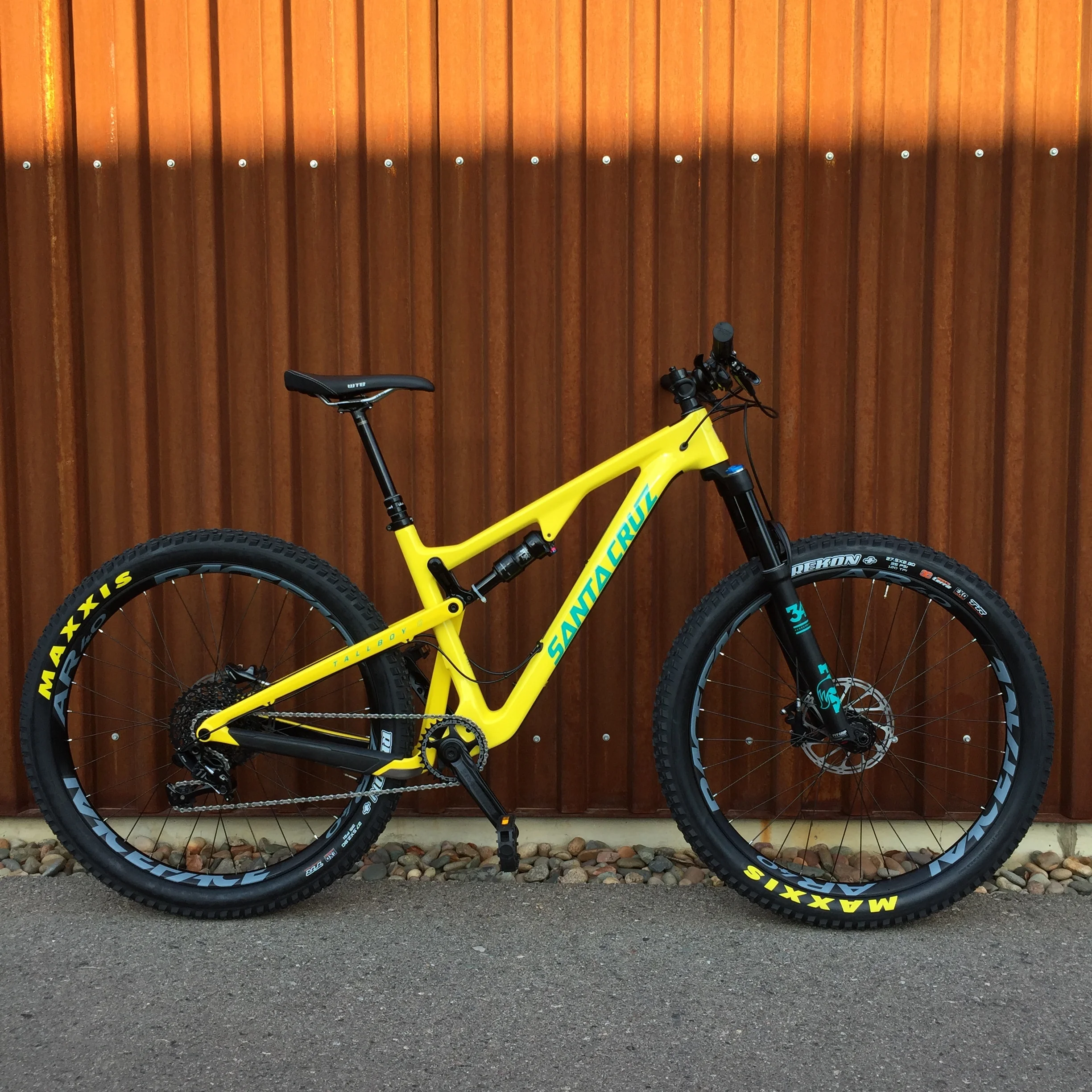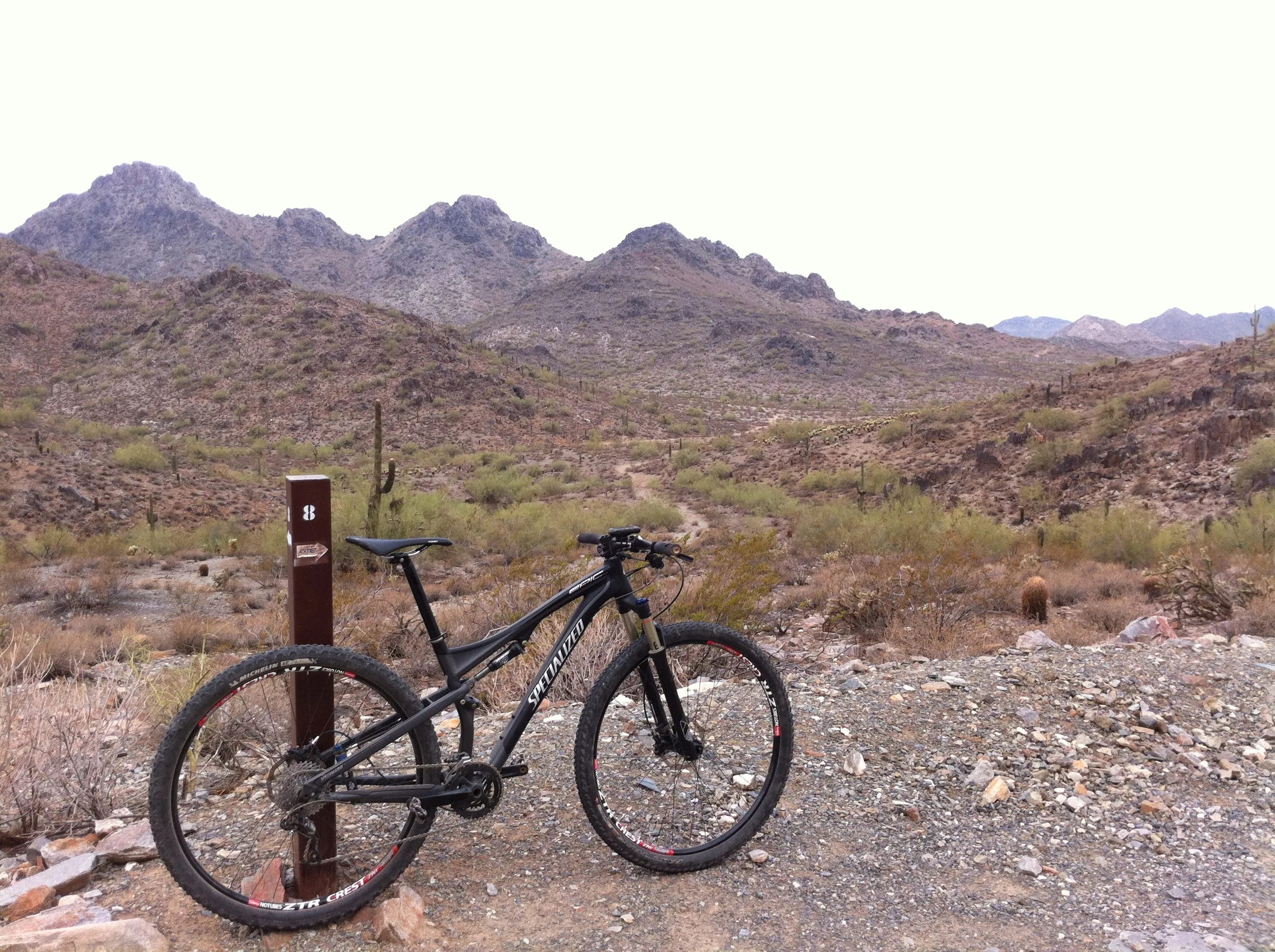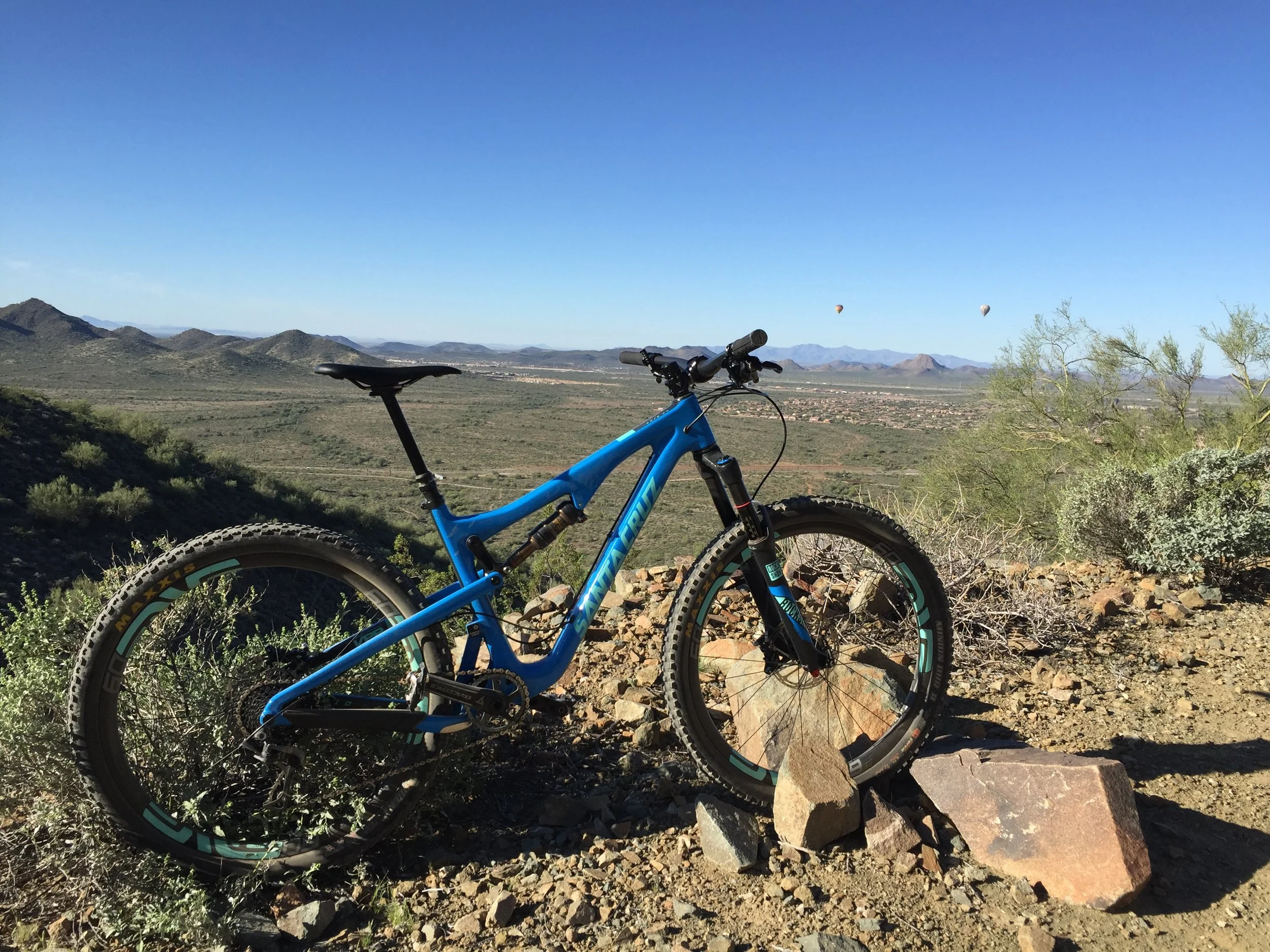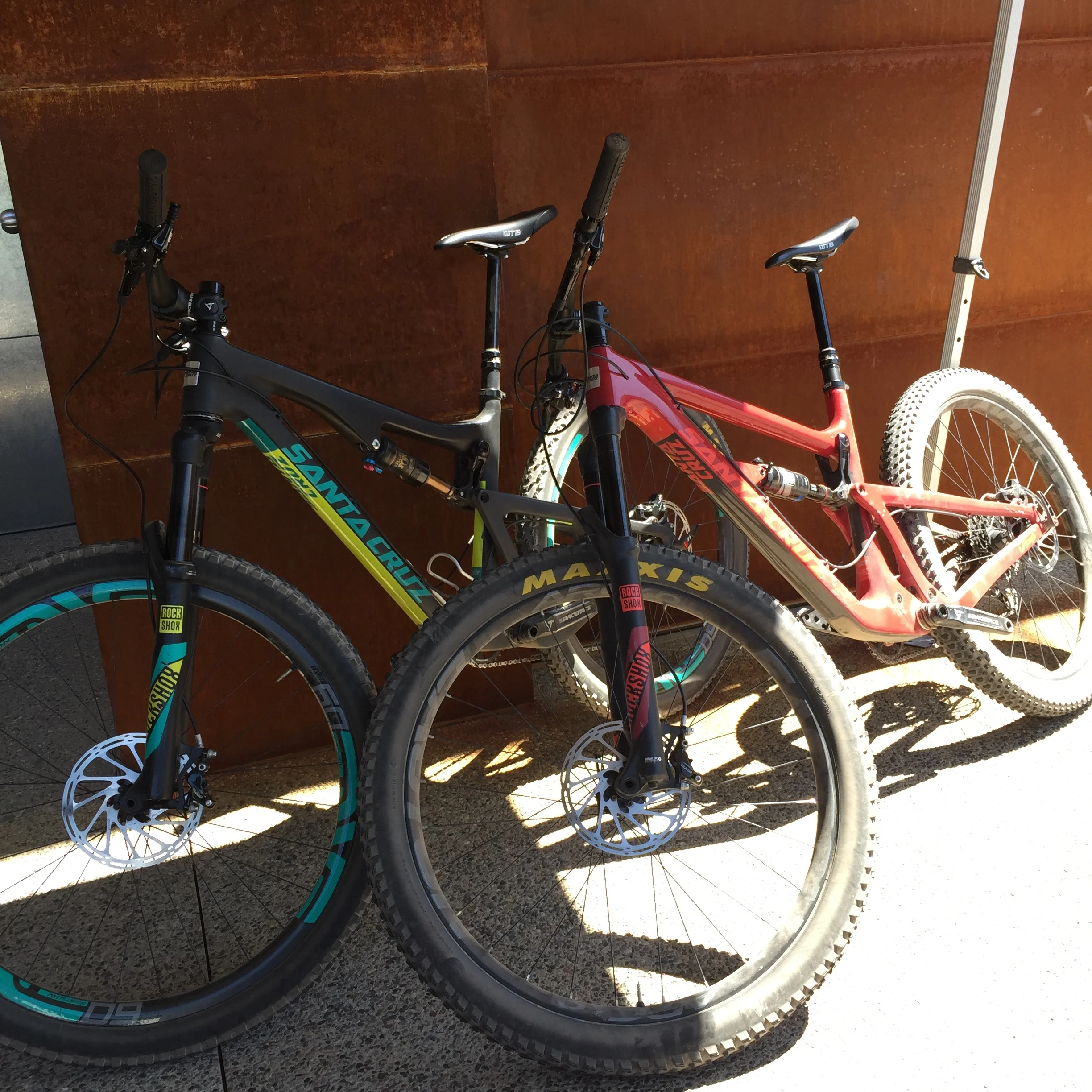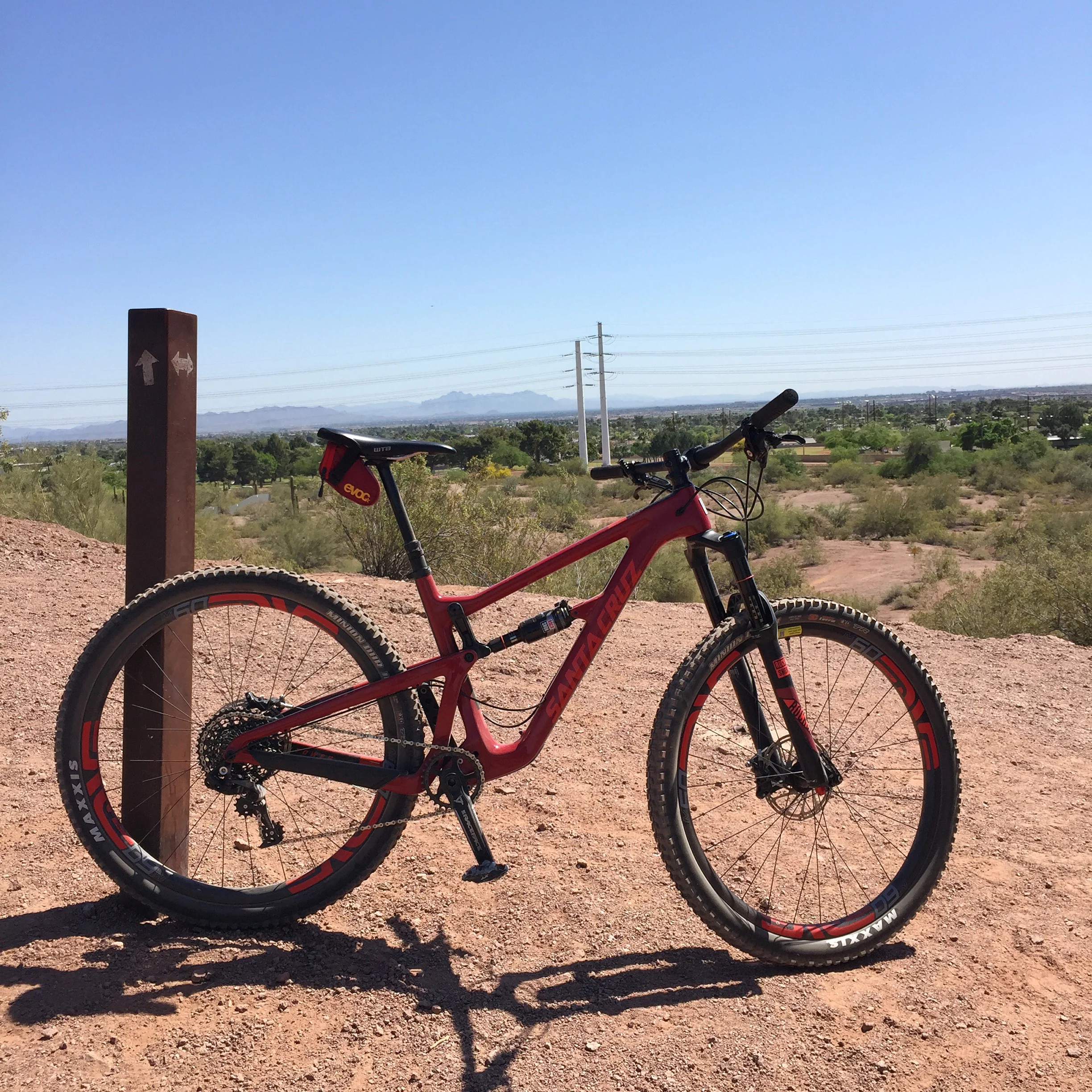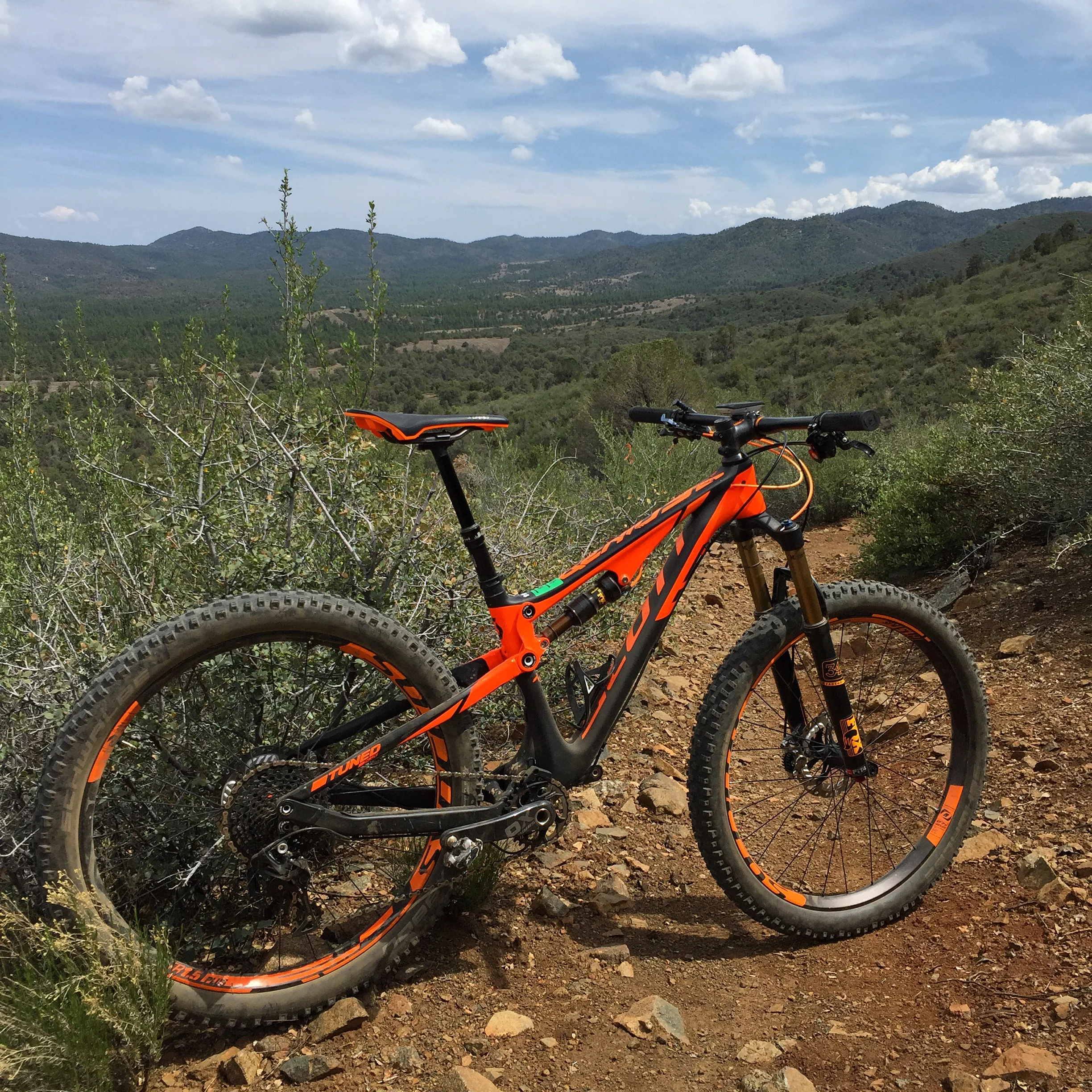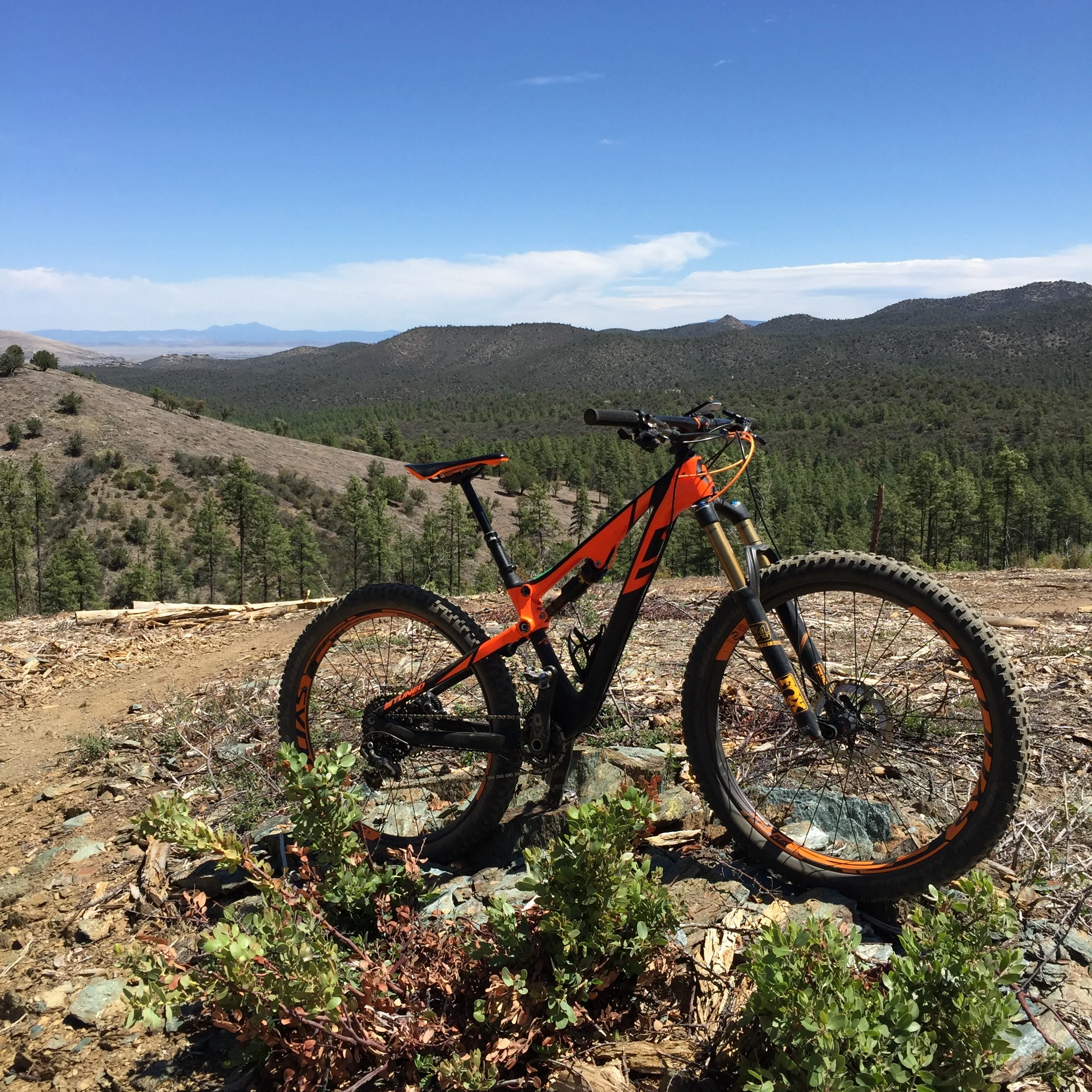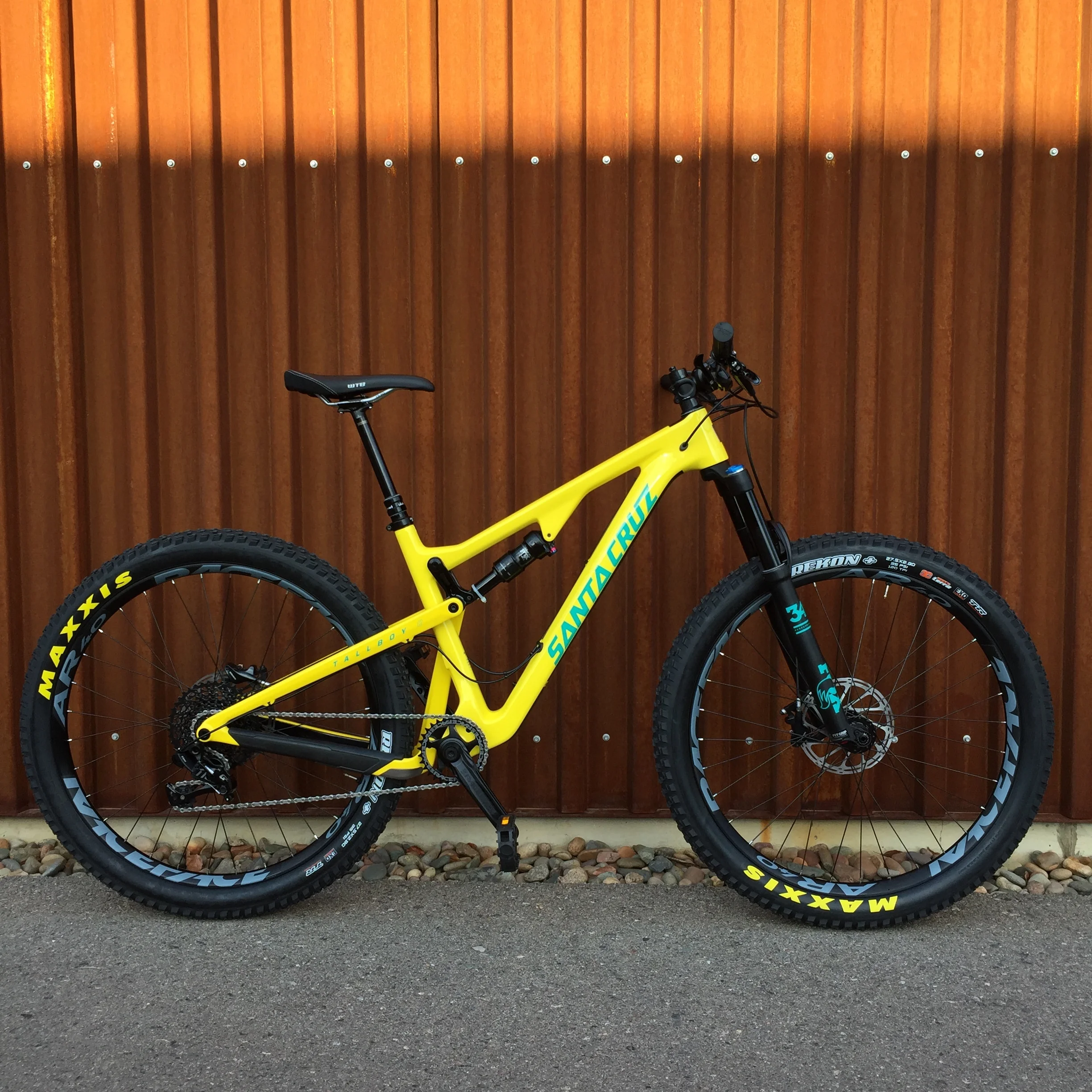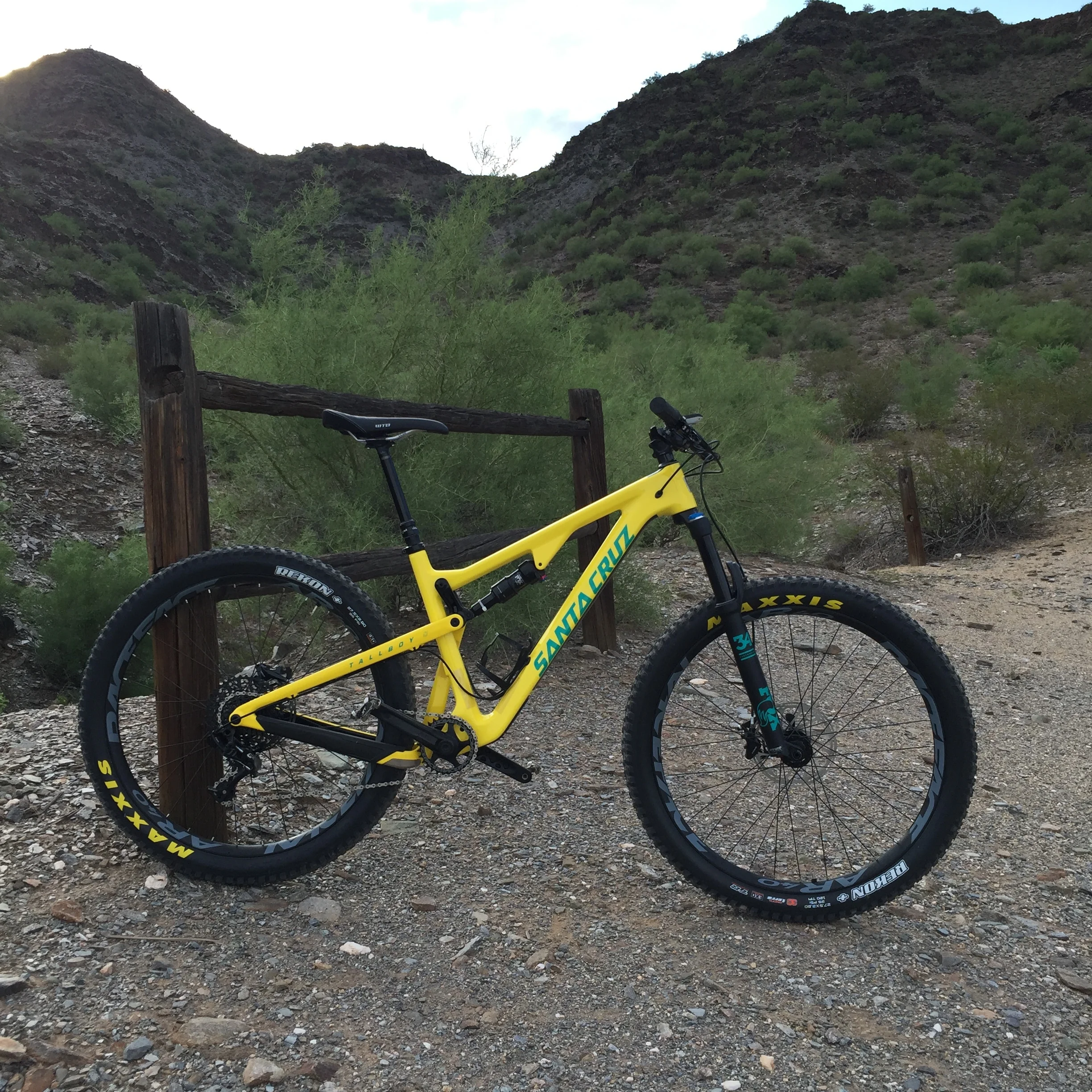The Meticulist buys a new mountain bike
Riding bikes is my longest running passion or hobby, I started mountain biking with my Dad in grade school, and returned to cycling more seriously after college; starting on the road by way of fixed gears around 2006 or 2007 before racing road bikes from about 2010 on. I picked up my first mountain bike (as an adult) in the summer of 2010, a Scott Scale 29” hardtail, before deciding Phoenix, and Arizona trails, are just too damn rocky not to go full squish. I’ve been riding a Specialized Epic Comp 29er since early 2012, a bike I chose because of its very race capable pedigree, which served me well. I did end up doing a few mountain bike races on this bike, but in the last few years I found my interests gravitating more towards going out and having fun doing more trail riding, rather than ripping an XC bike (though going fast on any trail is always fun). As the Epic got a little long in the tooth (as compared to how long I usually keep bikes) I started to evaluate what I wanted out of a new rig. This is the Purchasing Process that led to the 2017 Santa Cruz Tallboy 3 Carbon C S+ (a mouthful, isn’t it?).
If the Epic was a scalpel, I was seeking hmmm I don’t know, a hatchet, a throwing knife maybe, something really damn fun. My riding had shifted to wanting to head into the woods or the desert to just find great trails, good times, and awesome places. It’s not that Epic couldn’t do those things, but it’s that it wasn’t necessarily the tool suited to doing those things. The Epic is all business, it goes fast, it has razor sharp handling, and it’s efficient. At times, I just kind of felt like I would fight the bike and it's super responsive (twitchy) handling in more technical sections. Maybe it was the steeper head tube angle, long wheelbase, and the race oriented geometry, but I just wanted something designed less around racing and more around being a bike to have good times on, so I guess it’s pretty clear I was looking for a trail bike. The good news is that this segment is very popular right now and suspension has gotten very good as of recent, making these trail bikes pedal better and be more versatile. Coming from a 100 mm front/rear 29er, I knew I wouldn’t need to add a ton of travel, but was thinking the longer and slacker geometry combined with kicking around the option of 27.5” wheels, would make for a more fun, playful, and trail capable bike.
The other revelation in this segment is plus size tires, to provide more traction and more fun without as much bulk and baggage as full on fat bike tires. And at this time bike manufacturers are/were also starting to launch switchable bikes, capable of running both 27.5+ and 29er wheels, since the outside diameter of each is relatively close. So, between suspension travel, wheel size, and tire size, there were a lot of options in play. Knowing the local shop I wanted to purchase from helped narrow it down a bit based on what brands they carried. I also knew that I was seeking a well-rounded component spec with less proprietary components and parts to make servicing and replacement easier. At a mid-tier price point (<$4500 or so retail), the field got even more narrow. Santa Cruz had recently announced their lifetime warranty coverage on their carbon frames, and they just happen to price their second tier carbon bikes around $4600 retail, so this was an obvious place to start my search.
I started by demoing the 5010, a 130 mm front and rear travel 27.5” wheel trail bike. This was the first 27.5” bike I had ridden, as well as the first bike with this much travel. I happened to demo a bike on some trails that were actually better suited to the Epic or even a hardtail, with long climbs and relatively smooth, fast, flowy trails. So, I kind of figured on this type of trail that favors a more racy bike with less travel, if I didn’t feel like I was giving up much in pedaling efficiency, a trail bike and this bike would be right in line with what I was looking for. I ended up loving the 5010. It pedaled beyond my expectations, was fun, fast, and very playful, wanting to get airborne and be pushed. The 5010 kind of became the benchmark for everything else I demoed after. What kept me from pulling the trigger on the 5010 right away was the increasing number of switchable bikes coming to the market, namely the newly announced Santa Cruz Hightower with 135 mm of rear travel and a 140 or 150 mm fork.
I was able to demo the Hightower in both wheel sizes, starting with the 27.5” plus bike. I was immediately impressed with the plus size tires and the increased traction and roll over anything fun they provided. Fast loose or loose over hard corners have always been a weakness and an area of hesitation for me and this flew through sections I used to struggle with. The increased traction when climbing was also immediately noticeable and appreciated. In 29er guise this surprisingly became a completely different bike. It was quicker, more snappy, and faster to get up to speed; it was a lot like the bike the Hightower replaced, a long travel XC rig. This initially left me a bit confused on which I would choose, but then I realized how nice it really is for it to have such a different personality in that by purchasing an extra set of wheels, you really can have two bikes in one. Apart from the wheel size, I was left kind of feeling that the rest of the bike was too much bike for me though. The increased travel makes it feel big and long, and more to manage. I wouldn’t say I was ever fighting the bike, but I didn’t feel at home on it as I did the 5010. Even though I found the suspension to be more active with more pedal bob than the 5010, I also couldn’t seem to use all of the travel, even when I tried and at different pressures or settings. It just simply seemed like it was a bit too much bike for the type of riding I typically do. This sentiment ended up being confirmed with the next bike I spent some time on, the Scott Genius 700 Tuned Plus.
A tricked out demo with similar specs to the Hightower, the Scott Genius 700 Tuned Plus is a 130 mm rear / 140 mm front plus size trail bike with Scott’s remote suspension control system for controlling suspension travel on the fly from the bars. I spent two days with this bike, versus just a long morning with the Hightower to really vet if 5” of travel was too much, like it felt on the Hightower, or if I just hadn’t dialed everything in enough. Seemingly, no matter how low (within reason) I went on fork and shock pressure, it was just too much travel for what I threw at it. The greater amount of travel also meant an increased amount of initial stroke in the shock’s travel, making it feel very active and plush, but maybe not quite pedaling as firm as the 5010, that I thought pedaled particularly well. Scott’s remote system also features a three position lever on the bars to quickly adjust the suspension to open, medium, or firm settings. The middle position did seem to improve pedaling some and the firm position a little more, but with the rear shock in particular, the remote system seemed to just limit travel more than actually change the responsiveness. It’s kind of a fun feature, and I can see it being right for some, but I just found it to complicate things more than necessary. All of the forks and shocks on any of these bikes generally have a three position lever or dial, so maybe it was just the visual clutter of the added controls on the bars, but all of it just seemed to yet again be too much. The other test for this bike was if after two full days of riding, the larger tires would also feel like too much. With the wheel and tire size decision still being in question, I mainly wanted to see if rolling the 2.8” rubber was going to get old, to which I can happily report it doesn’t. The initial visual perception seems bulky and sluggish, but all of these bikes spin up and roll very fast, quickly forgetting any extra visual heft. It could be the added stiffness of the boost spacing and larger diameter forks, or the extra rubber to the dirt traction of the tires, but the plus size bikes do not feel sluggish – they just plain feel fun.
Around this time, Santa Cruz also launched the Tallboy 3, although only in their top tier Carbon CC trim, which starts at $6100. With 130 mm front travel (with 27.5+ tires) and 110 mm in the rear, this seemed to be the ticket once the lower tier models were introduced IF 110 mm in the rear was enough. I was concerned it might not be since it is only 10 mm more than I was currently riding. The geometry, spec, and overall focus of the bike was spot on though. I continued to ride my 100 mm travel bike thinking about if it was a lot more travel that I really wanted or just a more fun, playful, and plush ride with more modern low and slack trail geometry and the extra fun plus size tires. I came to the conclusion that gobs more rear travel was not a necessity and took a chance on the Tallboy 3 once the lower tier carbon C and aluminum models were announced. The $4600 (MSRP) S+ trim was exactly in line with what I was seeking with the improved Fox Float 34 fork and 1x11 drivetrain.
First Impressions
The bike looks amazing, the visual “let’s go get rad” factor is high, and the finishing on the bike was also very impressive. The component spec was a pleasant surprise; not much was known about the Novatec hubs, but out of the box they seem well built with very nice engagement from the rear hub. The super wide RaceFace AR40 rims also look good and seem to have the bead of the 2.8” Maxxis Rekon tires at a good spread. With Stan’s Sealant in the tires and my older Shimano XT pedals, the bike came in just over 30 pounds. That’s a bit porky given the price and it being a full carbon fiber frame, but there is definitely some low hanging fruit in the weight savings department. The RaceFace Ride handlebar has a weight akin to a crowbar, and the RaceFace Affect Al crankset is also not light at well over 650 grams. Luckily, carbon bars and cranks have come down in price quite a bit in the last few years, so I may look to replace both. Given the roughly $1500 - $2000 jump up to the CC level frames, which save about ½ pound, I feel like the value is in buying the “C” model and upgrading the components. Especially when referring to the plus size model where the next available option is the $6600 SRAM Eagle equipped X01+ spec, where most of the weight is saved in the form of the Eagle group and crankset, with additional savings in hubs and a carbon spec’d bar.
All of the manuals, frame protection, decals, etc. are nicely packaged in a Santa Cruz drybag which was a nice bonus. Luckily there are a lot of clear vinyl frame protection strips as there are roughly 8 spots on the frame where the cable housing does or can come in contact with the paint. The mostly internal cable routing is pretty tidy, but there are simply a lot of cables going to a lot of different places on the bike. There is one bottle cage mount contained in the main triangle. With a side loading cage, I was able to fit a full 24 ounce bottle without any problems. Setting fork and shock pressure was pretty straight forward by sag measurement, though I found it easiest to go directly to Fox’s website for those recommendations. I weigh a little over 130 pounds first thing in the morning, so I figure I’m over 140 with shoes, helmet, two tubes, tools, and a full Camelbak. I found setting rear shock pressure just over that weight at 150 psi to be good starting point. I think I tend to be lighter on the front end, at least while seated, and set the fork at 55 psi. On my first ride, I found the recommended rebound settings to feel pretty darn close to where they need to be. I may play with the rebound on the shock a little, but I anticipate it won’t be much. I would strongly suggest anyone that rides a plus or fat tire sized bike invest in a good low pressure gauge. I used this automotive style and started with an educated guess of 12.5 psi in the front and 14 in the rear. I might be able to go a little lower, but this felt really good on the trails I ride most often, even in low traction sections.
About that first ride, the bike rips. Within the first 10 minutes on the trail I had to tell myself to cool it a bit, that I was on a bike that I didn’t know that well, since I was carving the trail left and right and jumping everything in sight. The bike just begs for it with gobs of traction and a suspension platform that pedals well and soaks up everything so well. The first ride was on the trails close to my house that I ride more than any others, though they had some different lines and were quite washed out in sections from recent rains. There were two instances in particular where the line I typically took down a steep decent happened to not be there. On the first instance I was greeted with a new drop off which the slacker geo and increased travel handled admirably. On the second instance I just nailed a big rock straight on and was almost certain I was going down. The fork soaked up every last millimeter though and kept me upright. The review on Bike Radar kind of knocks the bike's big rock and descending capabilities, at least in 29er form, but I think maybe that has to do with perspective of what bike you’re coming from as well, as the tester clearly favored the Hightower. He was correct in that, it’s not a downhill or enduro bike, if you’re mainly bombing down descents, the Hightower might be the better bike for you. But if like me, and you’re looking for something that still feels fast and firm when needed, in a pedal friendly go anywhere bike that still wants to party, this is plenty capable and way more fun than my Epic.
I look forward to doing a more thorough review of the bike, as pretty much every review I was able to find from the publications to the forums was for the bike in 29er form. For now, I’m hoping my lengthy purchasing process might help others in being able to take what worked or didn’t work for me in helping them find their next right bike. At least for now, I think I’m on it.
TL ; DR
The too long; didn’t read would be as follows:
- Coming from 29er FS XC bike, I wanted a more fun and playful trail oriented bike that didn't sacrifice all pedaling and speed.
- The Santa Cruz 5010 rode really well, I still love that bike, but Boost spacing, plus size tires, and the ability to switch wheel sizes won out.
- The Santa Cruz Hightower was fun, but a big bike.
- The Scott Genius 700 Tuned Plus was a more techy version of the Hightower.
- The Tallboy 3 has so far seemed to be the Goldilocks bike with the right combination of plus size tires, boost spacing, wheel size switch-ability, efficient pedaling, and playful demeanor.
Special thanks goes to Bicycle Haus, in Scottsdale, Arizona, for once again putting up with my drawn out purchasing decisions and taking care of me on the demo bike front. I knew I would want any maintenance and any potential after sales support to come from here, so it was a no brainer.
